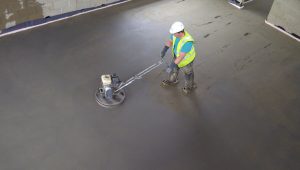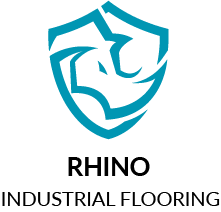Cementitious pump screeds are becoming increasingly popular in the construction industry due to their benefits and versatility. These screeds, also known as pumped screeds, are a modern alternative to traditional floor preparation and installation methods. It is a revolutionary technique that offers numerous benefits over conventional epoxy putty or wet-cast systems for flooring applications.

In traditional methods, which require manual mixing and spreading of the screed, pumped screeds are mixed and pumped onto the floor using specialized equipment. This significantly reduces installation time and labor costs, making it an attractive option for large-scale projects.
What are Cementitious Pump Screeds?
Cementitious pump screeds, often referred to simply as pump screeds, are flooring materials used in construction and renovation projects. Cementitious pump screeds comprise a combination of cement, sand, and water.
The most common components include cement, sand, water, and additives such as polymers or fibers. These ingredients are mixed in specific ratios depending on the desired strength and characteristics of the screed. Then comes the thickening agent, which helps the screed set quickly and evenly.
Fibers may be added to improve the durability and strength of the screed. There’s the waterproofer that helps prevent moisture seepage and warping. Each of these components is carefully measured and combined to create a pumped screed that can easily be pumped or poured into place, creating a smooth surface that is as long-lasting as it is aesthetically pleasing.
Types of a Cementitious Pumped Screed
There are two main types of cementitious pump screeds: traditional and self-leveling.
Traditional pump screeds
Traditional pump screeds have a lower consistency and require manual spreading using traditional techniques. They are ideal for thick applications where the thickness is above 50mm.
This type of screed is made up of a mix of sand, water, and cement and poured using a pump.
The traditional method involves adding a binding agent and fibers to create a firm surface ideal for various applications.
It may take longer to lay, but this type of screed provides a durable and reliable finish that can withstand heavy traffic and weather conditions. If you’re working on a residential or commercial project, traditional pump screeds are great for creating a high-quality, long-lasting surface.
Self-leveling pump screeds
Self-leveling pump screeds, conversely, have a higher consistency that allows them to flow smoothly and evenly across the floor. They offer a smooth and level finish for floors, making them an ideal choice for various flooring applications. In traditional floor screeds, self-leveling pump screeds are designed to be self-leveling, which means they don’t require manual leveling or troweling.
The self-leveling property makes this pump screed perfect for creating an even surface on uneven or rough subfloors. It also eliminates the need for manual leveling, which can be time-consuming and labor-intensive.
Factors to Consider When Choosing Cementitious Pumped Screeds
When deciding on the type of cementitious pumped screed to use for your project, there are several factors that you should consider. These include:
Purpose Of Build
The purpose of the build is the first and foremost factor to consider when selecting a cementitious pumped screed. Whether the construction is residential, commercial, or industrial will heavily influence the type of screed used. Residential and commercial buildings often require a finer, more aesthetic finish, which can be achieved with self-leveling pump screeds.
On the other hand, industrial constructions may need a more durable and robust screed that can withstand heavy machinery and high foot traffic. In such a case, traditional pump screeds are a more suitable option. Specific types of screeds are recommended if the construction project involves specialized applications like underfloor heating or sound insulation.
Time
Time is a crucial factor to consider when choosing a cementitious pumped screed. The setting time can significantly impact the project timeline. Traditional pump screeds typically require more time to set and cure than self-leveling screeds.
self-leveling screeds may need additional time for application due to their self-leveling properties. Therefore, it’s essential to consider how much time is available for the screed to dry and set and choose the type of screed accordingly. Rapid-setting screeds might be the most appropriate choice when quick turnaround times are necessary.
Durability
Durability is another crucial factor to consider when selecting a cementitious pumped screed. The screed chosen must withstand the load and usage it will be subjected to over time. For instance, areas with heavy foot traffic or machinery require a more durable screed, such as a traditional pump screed, to prevent damage and ensure longevity.
Meanwhile, relatively thinner and smoother self-leveling screeds might be more suitable for areas with lighter foot traffic. Therefore, the expected durability and lifespan of the screed should be considered in tandem with the purpose of the build and the project’s specific requirements.
Benefits of using cementitious pump screeds
Cementitious pump screeds have become increasingly popular for their ability to provide a smooth and level finish to floors. They are self-leveling concrete pumped onto the surface and then worked to create a consistently level and flat bottom. The following are some of the key benefits of using cementitious pump screeds over traditional methods:
Speed and efficiency
Pumped screeds can be applied much faster than traditional methods, making them ideal for large-scale projects with tight timelines. This also helps to reduce labor costs and overall project timelines.
Ease of application
Pumped screeds do not require manual spreading or leveling, making them more accessible and less labor-intensive. This also ensures a more consistent finish.
Cost-effective
Specialized equipment makes installation quicker and less labor-intensive, ultimately reducing project costs. Materials are needed as pumped screeds can cover larger surface areas than traditional methods.
Enhanced strength and durability
Additives like fibers and waterproofers make cementitious pump screeds more durable and moisture-resistant, improving longevity.
Smooth finish
Pumped screeds create a smooth and even surface that is perfect for applying various types of flooring, such as tiles or resin. This also eliminates the need for additional leveling or smoothing before installing the final flooring.
Fast Installation
One of the most significant advantages of cementitious pump screeds is their quick and efficient installation process. Unlike traditional screeds, which can take considerable time to mix, pour, and level, pump screeds are ready for use immediately after being pumped onto the surface.
Using specialized equipment ensures accurate and consistent delivery of screed material, significantly reducing the time required to level and smooth the floor.This accelerates the installation process and allows for a quicker return to service.it’s important to note that although the installation process is fast, adequate time should be allowed for the screw to cure fully before installing the final flooring.
Conclusion
Cementitious pump screeds are a reliable and efficient option for creating a smooth and durable surface ready for any flooring. Cementitious pump screeds offer numerous benefits over traditional methods, including speed, cost-effectiveness, strength and durability, smooth finish, and versatility. Proper installation is crucial for achieving these benefits and avoiding common issues. By following the tips and precautions, you can ensure a successful installation of cementitious pump screeds for your construction project. It is always best to seek professional assistance to provide optimal results.
FAQ’s
What is the difference between traditional screeding and pumped screeding?
Traditional screeding involves manually mixing and pouring a sand and cement mixture on the floor, whereas pumped screeding uses specialized equipment to pump a self-leveling concrete onto the floor.
Can I use cementitious pump screeds for outdoor projects?
Cementitious pump screeds can be used for indoor and outdoor projects.
How long does it take for cementitious pump screeds to dry?
The drying time varies depending on ambient temperature, humidity, and thickness of the screed. On average, it takes around 24-48 hours to dry completely before any flooring can be applied on top.
Can I apply any flooring on top of cementitious pump screeds?
Yes, cementitious pump screeds create a smooth and even surface suitable for various flooring types, including tiles, vinyl, and carpets.
Can I install cementitious pump screeds myself?
It is recommended to have a professional contractor handle the installation of cementitious pump screeds for best results. If you have experience with concrete work and the necessary equipment, you can attempt it yourself.
